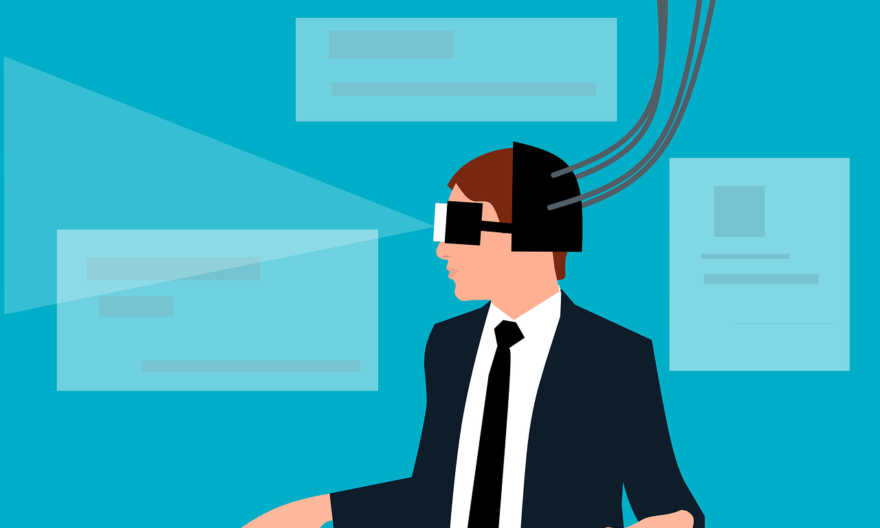
Is Facebook building metaverse? Is Facebook now called Meta? You may have these questions in mind after Mark Zuckerberg repositioned Facebook around the metaverse and renamed it as Meta at Facebook Connect on 28th Oct 2021.
So, first of all,
What is the exact meaning of metaverse?
Since the covid period, education has gone online, people started working from home, and everyone started implementing social distancing. People were and are virtually in touch with each other through calls and video calls. At this point, metaverse comes into the action. We all have heard about Augmented Reality(AR) and Virtual Reality(VR).
Metaverse is something more than that. “Meta” in metaverse means “beyond”, implying it is beyond the current virtual world technologies, VR and AR. In a nutshell, the metaverse is a world where the physical world and digital world converge.
Facebook says metaverse benefits will help people connect, play, work, exercise, or do whatever they want, virtually together yet physically distanced. It’ll create a whole environment where the person could invite his friends and do kinds of stuff together.
Mark Zuckerberg, in his speech, said that the idea behind rebranding is that, in the future, they don’t want Facebook to be called just a social media website. They want to see it as a Metaverse company primarily and then a social media website.
Facebook has already announced that it will invest $50 million in the development of Meta– The Facebook metaverse company. It will also create around 10,000 new jobs in Europe during the journey of the company building.
“The Internet connects people, but the Facebook platform goes beyond that to connect people with all the things they want. We’re connecting people not just with each other but to the world around them,” Zuckerberg said. “We know people want more ways to communicate and express themselves. Meta is the next step in that journey,” he added.
The metaverse is a virtual space where people can meet, interact, share, create, and learn. Initially, Meta will be focused on building virtual worlds, but over time, Zuckerberg said, the company will broaden its scope by developing new platforms and tools that make it easier for people to use Meta’s virtual worlds to create and share content.
Read how Angular 9 was released with next-gen Ivy as Default Rendering Engine.
After the Facebook metaverse announcement, its shares hiked up by 9% in 1 week, showing its hype worldwide.
Meta is nothing; but a drastic transition from 2D to 3D, where interactions and connections look more realistic than present technologies. While briefing about Meta, Zuckerberg introduced some new concepts and visions of the company in the event. Each of them holds an essential role in the development of Meta and metaverse. More details about the concepts are as follows.
Horizon Homes and Horizon Worlds
Horizon Home is one of the initial parts of Meta-metaverse by Facebook. The first thing the user requires is a headset to put on. Meta names it “The Quests”. The first thing the person will see when they put on their quest headsets is the horizon homes.
Primarily the users would get various options to choose from. Then they will be able to create one by themselves. It would be a place where the users could invite others and join others’ homes in the form of an avatar, a Metaverse Avatar. Here they can talk, hang out, watch videos or do anything they want.
Then there is Horizon Worlds, where users can make and customize their world. From objects to surroundings, they can make it all. They can jump into each other’s worlds and invite family and friends for virtual trips and virtual events. Meta will give privacy priority in their metaverse. So, a person can set restrictions or even prevent someone from entering their world, unlike the real world!
Presence platform
Real presence is the key to feeling connected in the metaverse. It would be a mixed reality experience (combination of AR and VR), making it more realistic. For example, if the person wears the quest headsets and moves their hands in front of their eyes to grab a virtual glass, they should see the hand holding it through all dimensions. It includes the hand’s interaction, the environment, movements, etc.
Project Cambria
Project Cambria is something that will push the boundaries of VR. Here the quests will be updated for the avatars with eye contact and natural facial expressions. It will depict the real-time expressions of the user so that the other users can feel the actual conversations and movements. They will also ensure that every avatar represents a diverse set of human facial features and skin tones. Project Cambria will highlight every small detail like beards, mustaches, and glasses to ensure the avatar looks like the user.
There’s also another approach of Project Cambria. After keeping the headsets on, the user will be able to work on multiple screens, switching it and rearranging them—all using holograms and virtual things and not on physical devices.
Nazare Glasses
Nazare glasses is an initiative in AR advancement. Users can chat, play or do anything they want with the use of holograms and other technologies. They can play a board game at their home table, inviting their friends and family. A hologram of the game will appear, mixing with the real world with all the depth and perspectives, and that’s it. Now you are playing some games with friends who are thousands of miles away from you, yet sitting at your dining table.
Final Words
At last, A point to note is that the Facebook company will now be called Meta. All its other apps like Facebook, Messenger, Whatsapp, Instagram, and others will remain the same and unaffected. So, one can say that Facebook (now Meta) is building some new revolutionary technology that will be an advancement in the metaverse, justifying their mission bringing people together.
